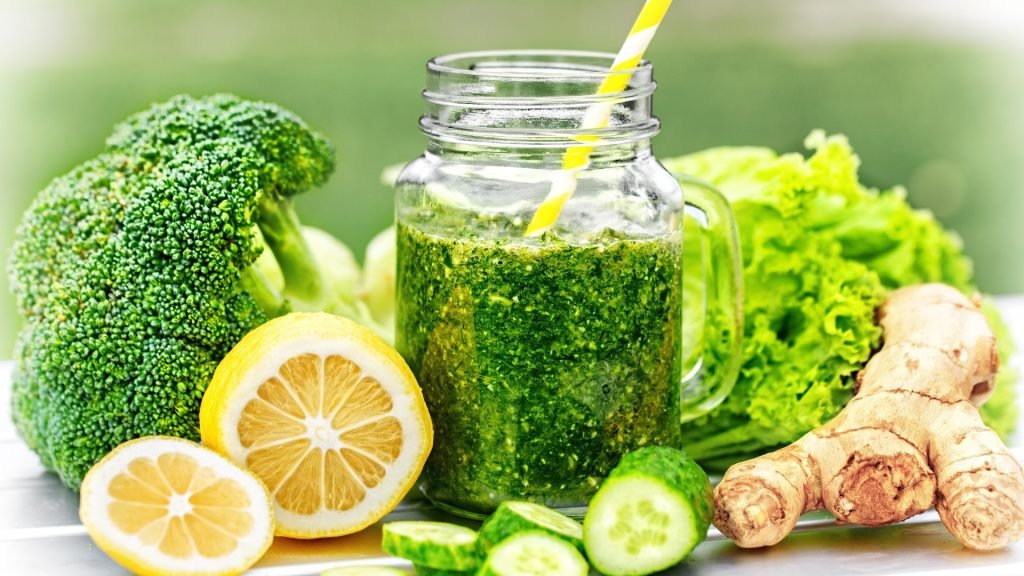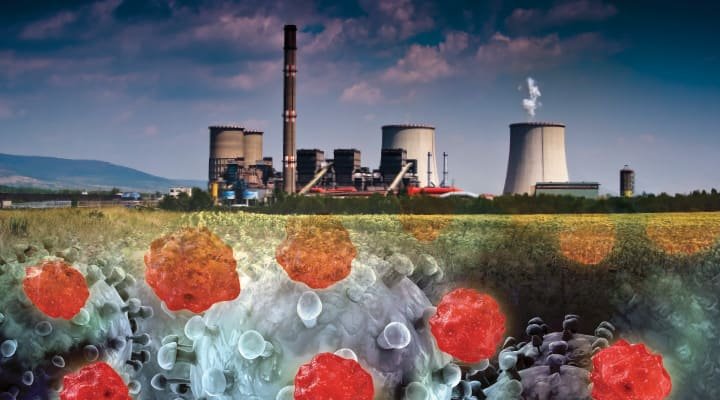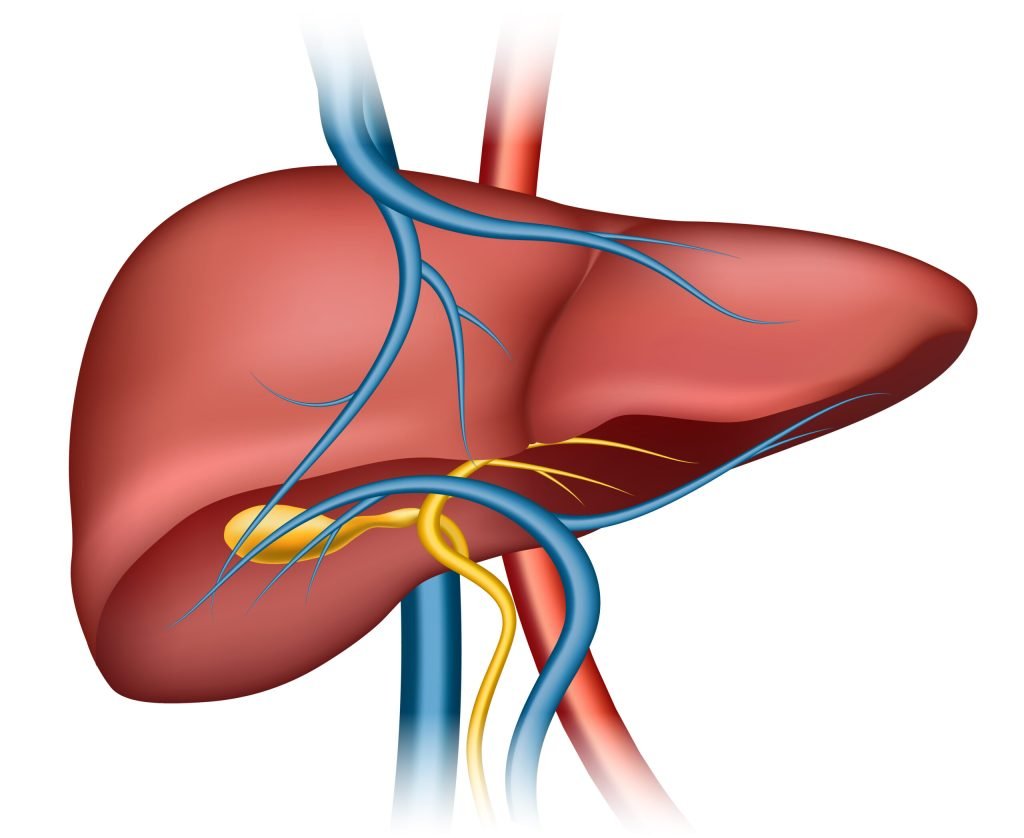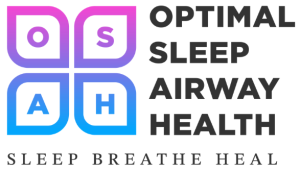Detoxification, Toxins, and You

None of this should be considered medical advice, and does not replace your own medical practitioner. This is for education purposes only.
Why Should you be concerned about toxins?
You may be thinking about performing a detoxification protocol due to some health concerns. This may clear the obvious health issues but can also benefit the body in more subtle ways.
When toxic chemicals and metabolites accumulate in the body the elimination systems become overloaded, under resourced or possibly were epigenetically down-regulated. In these scenarios, the body can become progressively more sensitive to chemical exposures, even some may not be generally considered toxic, but in this case are not able to be dealt with effectively, causing a sub-optimal situation. This can lead to a scenario of multiple chemical sensitivity, and in some cases immune system activation.
The body, overburdened with toxins will start to manifest symptoms, drawing your attention to its plight, in expectation of you rectifying the issue.
These can include:
- Headaches
- Nausea
- Digestive dysfunctions-
- Coated tongue, constipation, diarrhoea, bloating bad breath, reflux.
- Weight gain
- Blood sugar imbalances
- Fatigue
- Mood changes
- Skin issues – rashes, hives, dermatitis, pellagra, acne, psoriasis
- Allergy – wheezing, hives, mast cell response
- Brain and cognitive issues – mood swings, brain fog, poor memory

Where Do we get toxin exposure from?
We are increasingly exposed to toxins every day from our food our water, the air we breath, from just the actions of daily living. This is not to mention exposure from clothes, make up and personal care products, the foam in our beds, cars seats and couches, flame retardants in our homes to name a few. These chemicals have become drivers of primary drivers of disease burden, even medications can contribute to decreasing our vitality, when they were meant to save lives.
The following is a simple list of Common Heavy Metal Toxins, Source of exposure and symptoms they might cause.
Note: This is not any way an exhaustive list, and may not include sources or kinds you’ve been exposed to.
| Toxin | Source | Symptom/Disease Associated |
| Arsenic | Water | Asthma |
| Foods/Crops grown with contaminated water – Rice | Brain Fog/Cognitive issues | |
| Building supplies- treated timber | Diabetes | |
| Meats (sheep dip) | Dyslipideamia | |
| Pesticides | Gout | |
| Arsenic Cont. | Chicken | Skin issues |
| Aluminium | Aluminium Foil | Alzheimer’s/Dementia |
| Water | Brain Fog/Cognitive issues | |
| Food – Grains | Bone Disease-osteoporosis/osteomalacia | |
| Building supplies – Windows/flashing | Depression | |
| Deodorants | Inflammation- Bowel | |
| Toothpaste | Joint pain | |
| Cosmetics | ||
| Cadmium | Cigarettes | Brain Fog/Cognitive issues |
| Jewellery production | Bone demineralisation | |
| Manufacturing- Batteries, plastics, coatings, solar panels | Joint pain | |
| Mining | Skin ulcers | |
| Smeltering | Emphysema | |
| Hypertension | ||
| Infertility | ||
| Lead | Paint | ADHD |
| Building supplies – flashing, roofing | Bone disease | |
| Plumbing | Neuropathy | |
| Batteries | Brain Fog/Cognitive issues | |
| Water | Infertility | |
| Anaemia | ||
| Mood disorder/anger/aggression | ||
| Loss of position sense/coordination | ||
| Loss of IQ | ||
| Inflammation -systemic/multi-system | ||
| Erectile dysfunction | ||
| Mercury | Amalgam Dental fillings | Headaches |
| Seafood | Metallic taste in mouth | |
| Fluorescent light bulbs | Fatigue/Muscle weakness | |
| Old thermometers | Loss of memory, dementia | |
| Medications- mercurochrome | Depression, mood swings, anxiety, behaviour change | |
| Smeltering | Thyroid disorder | |
| Mining | Mitochondropathy |
The following is a simple list of Common chemical/Toxins, Source of exposure and symptoms they might cause.
| Toxin | Source | Symptom/Disease Associated |
| Solvents and Chlorinated Solvents – Benzenes, Methylbenzene, Toluene, Xylenes | Paint Remover/Stain Remover | Erectile dysfunction |
| Vehicle exhaust fumes | Headaches | |
| Cigarettes/Possible Vapes (limited data -so assume it as a danger) | Respiratory Issues | |
| Petrol Stations | Eye Irritation | |
| Wood Stain/lacquer/Varnish | Arthritis | |
| Adhesives/epoxy Resins/Glues | Skin issues | |
| Industrial Emissions | Liver Toxicity | |
| Alzheimer’s/Dementia | ||
| Plasticisers Bisphenols (BPA,BPS,BPF) | Canned Food- The linings | Erectile dysfunction |
| Water Bottles | Allergy and Atopy | |
| Food in plastic packaging | Liver Disorders | |
| Water pipes | Diabetes, metaboloic syndrome and Insulin resitence | |
| Sales Receipts- thermal print | Dyslipideamia | |
| Feminine Hygiene products | PCOS | |
| Toiletries | Memory Issues | |
| Other plastic products- DVD’s | Hyperactivity- Children | |
| Frequent infections | ||
| Polybrominated Diphenyl Ethers (PDBEs) and Perfluorinated compounds (PFCs) | Flame Retardants- Including fabrics and materials of daily living, clothes couches car seats etc. | Liver Toxicity |
| Electronics | Erectile dysfunction | |
| Non stick cook ware | Infertility | |
| Mattresses | Dizziness | |
| Carpet | ADHD | |
| Furniture | Diabetes | |
| Fish | Liver Toxicity | |
| Neurotoxicity and oxidation | ||
| Headaches | ||
| Phthalates – plastics | Asprin | Headaches |
| PVC- Vinyl flooring and other products | Muscle weakness | |
| Cleaning products | Mood disorder | |
| Toys | ADHD | |
| Tools | Diabetes | |
| Car Parts | Liver Issues | |
| Toothbrushes | Obesity | |
| Personal Care products | Respiratory disorders | |
| Beauty products/makeup | Frequent infections | |
| Food/Food packaging | ||
| Polyaromatic Hydrocarbons (PAHs) | Car Fumes etc | Headaches |
| Burning of Meat/Foods, think BBQ charred meat | Nausea | |
| High Temp Cooking, Deep Frying | Mood disorder | |
| Moth Balls | ADHD | |
| Cigarettes/vaping/Cannabis | Diabetes | |
| Burning of oil,coal, gas, wood, waste material, tobacco | Liver Issues | |
| Dyslipidaemia | ||
| DDT, Dioxins, Furans, PCBs, Organochlorine pesticides, organophosphate pesticides | Food, meat fish, canned foods, non organic | Headaches Brain fog |
| Farming and agriculture | Nausea/vomiting | |
| Old appliances | Memory Deficits | |
| Refuse centres | ADHD | |
| Diabetes | ||
| Liver Issues | ||
| Eyelid swelling | ||
| Developmental delay and | ||
| behaviour issues in children | ||
| Obesity | ||
| Hypertension | ||
| Immune System Disfunctions | ||
| Fatigue | ||
| Early Menopause | ||
| Infertility | ||
| Dementia | ||
| Joint Pain /Arthropathies |
Occupational Toxin Exposure:
Is your job affecting your health?
As much as we might otherwise wish it, sometimes exposure to toxins is unavoidable. They can become especially difficult in the occupational setting. In these situations, its essential to try find ways of reducing exposure and mitigating effects. It’s also essential to work with a seasoned skilled professional to help reduce the toxic load in a balanced manner. Certain occupations have a greater likely risk of exposure the following is a non-exhaustive list of professions with toxic load and what types of toxins you will likely be exposed too.
| Profession/Occupation | Toxin |
| Painters | Benzenes, VOCs, Arsenic, Lead, Solvents (turpentine etc) |
| Hairdresser | Hair /dyes, ammonia, perming solution |
| Construction workers/builders | Asbestos, benzenes, VOCs, formaldehyde, brominated flame retardants, di- isocyanates, silica, sealants , Arsenic, Lead, Solvents (turpentine etc) |
| Mechanics | Asbestos, benzenes, VOCs, solvents, mechanical fluids |
| Textile workers | Nylon, industrial plastic, VOCs |
| Plumbers | Lead, Solvents, PVC, Xenoestrogens, via sewage exposure |
| Food workers | Vapourised, High temp Industrial seed oils |
| Margarines, Flavourings, colouring, bromination, Hexanes, VOCs, solvents |

Ultimately in all situations we are trying to balance all equations in our favour, in the case of detoxification we are trying to lessen the input of toxic load, while trying to enhance the body’s ability to effectively move the chemical through Phase 1 and 2 detoxification process. We also need to maintain the amount of resources available to catalyse the detox reaction and rid us of the toxin.
We are trying to enhance the body’s natural detoxification mechanisms and eliminate harmful substances.
There are many ways of going through a detox, with different degrees of difficulty to manage. Your practitioners will guide you through the process, some preferring to do specific testing for detox function, epigenetics, toxic load and resource capability before starting, and others following a protocol driven process with specific nutrients and diet to support upregulation of detox pathways.
It’s important to manage the detox in a manner that allows the body to balance the ability to release the toxins, process them and remove them from the body safely. If the body has not been optimised to support and nourish the detox pathways, the result may be an increase in side effects symptoms such as a Herxheimer response, rashes, itchiness, headaches and more.
Liver Function
Optimal liver function is important for sleep and sleep is important for detoxification, a major function of the liver. The liver plays a central role in may metabolic pathways, so any general interference with liver function can have extremely diverse effects. For example, impaired liver function may lead to problems in uric acid metabolism, and hence to gout or difficulties in maintaining circulation, to problems in protein synthesis, growth and development and even kidney function.
Functions of the liver:
1. Regulates carbohydrate metabolism
2. Has storage functions
3. Regulates protein metabolism
4. Detoxifies many toxic substances
Liver function is very important – a healthy liver plays a role in maintaining a healthy weight as it is the organ in the body that detoxifies the blood stream.

Phase 1 Detoxification

The phase 1 pathway of detoxification involves a group of enzymes collectively called Cytochrome P450. During phase 1, toxins are broken down usually by oxidation, reduction and hydrolysis. This can either transform the toxin into a water-soluble form which allows excretion by the kidneys or converts it to a more chemically active form to be metabolised further by phase 2.
Phase 1 detoxification results in the production of free radicals as the toxins are transformed. Without sufficient antioxidant protection, these free radicals can damage the liver and other body tissues.
Phase 1 also must be balanced by phase 2, to finish the detoxification process and if phase 2 detoxification is not working efficiently, toxic intermediates can build up in the body causing damage.
Nutritional Support for Phase 1 Liver Detoxification
| Product | Nutrients | Action | Dose |
Sleep and Detox Nutrients | Niacin, riboflavin, zinc, magnesium, thiamine, quercetin, folic acid, vitamin B6, Vitamin C, high protein diet, leucine, isoleucine and valine | Regulate phase 1 activity. B Vitamins are co-factors for enzymes involved in Phase I detox activities. | 1 serve per day |
| Cysteine, glycine, glutamine, vitamin C | Precursor nutrients for glutathione production; counteracts free radicals produced through phase 1 detox. | ||
| Vitamin A, vitamin E, zinc, selenium, magnesium, manganese, quercetin | Antioxidant nutrients to counteract and neutralise free radicals produced from phase I detox |
Phase 2 Detoxification
There are differing pathways in phase 2 liver detoxification. Certain toxins are bound (conjugated) by different substances to be excreted. A few of these pathways are briefly explained below.
Glucuronidation
In the process of glucuronidation, glucuronic acid is added to toxic compounds. Oestrogens are bound this way, as are many drugs, such as steroids, morphine, diazepam, aspirin and salicylates. These substances are then excreted in either urine or bile. A yellow sclera (the white of the eye) and jaundice are signs of decreased glucuronidation.
Sulphation

Sulphation is the major pathway for detoxification of amine neurotransmitters and steroid hormones including testosterone and thyroid hormone. It also binds substances such as preservatives and artificial food colourings. These substances are converted into soluble forms to be excreted in the urine or bile.
This pathway requires sulphur containing compounds to act as sulphur donors for the process. These usually include the amino acids cysteine, N-acetylcysteine, methionine and taurine.
Glutathionation
This is the process of glutathione conjugation, which binds toxins such as heavy metals, pesticides and solvents, to be excreted in the urine or bile. High levels of exposure to toxins, therefore depletes glutathione quickly leading to increased susceptibility to diseases such as chronic fatigue syndrome.
Drugs detoxified by this process include paracetamol, certain substances in cigarette smoke, antibiotics, some insecticides and the heavy metals mercury, cadmium and lead.
Glycination
Glycination is involved in the metabolism of salicylic acids and benzoic acids for elimination. Glycine is the most important amino acid for this process.
Acetylation
Acetylation involves the conjugation of substrates with acetyl CoA. This substance is produced within the body and is also involved with other aspects of metabolism including the Krebs cycle.
Methylation
Methylation involves conjugation of a substrate with a methyl group. Methionine is the chief methyl donor. Methionine and cofactors such as choline, vitamin B12 and folic acid are involved in the synthesis of SAMe (s-adenosylmethionine). SAMe dependent enzymes catalyse methylation reactions. It may be possible to measure serum homocysteine, vitamin B12 and folic acid levels to determine methylation reactions. High homocysteine, lower B12 and folic acid may indicate a decrease in methylation capacity. This is often the pathway most often disturbed in chemically sensitive patients.
Testing
Functional Liver Detoxification Profile
Nutritional Support for Phase II Liver Detoxification
| Product | Nutrients | Action | Dose |
Sleep and Detox Nutrients | Calcium-d-glucarate, magnesium | Supports glucuronidation pathway | 1 serve per day |
| Glycine, glutamine | Supports glycination pathway | ||
| Cysteine, glutamine, glycine, selenium, vitamin B6, B12, folate, rosemary | Supports glutathionation pathway and glutathione production | ||
| Cysteine, carnitine, pantothenic acid | Supports acetylation pathway | ||
| Cysteine, taurine, vitamin A, adequate protein | Supports sulphation pathway | ||
| Betaine (TMG), vitamins B12, B6, folic acid | Supports methylation pathway |
Additional Supplements to Consider
| Product | Nutrients | Action | Dose |
| LMII | Methionine, taurine, choline, vitamins B12, folic acid, B6, magnesium, glutamic acid | Supports phase II pathways including methylation and sulphation | 2 tablets twice daily |
| Detoxification Nutrients | Glutamine, cysteine, broccoli sprout extract, garlic, | Supports phase II pathways including glutathionation; | 2 tablets twice daily |
| vitamin C, selenium, zinc, pine bark extract, grape seed extract | provides antioxidant support. |

Detoxification in Practice
After testing and data collection your practitioner will design a specific detox program for you that will likely involve changes in diet, lifestyle and environmental exposures. It may involve supplements similar to the ones above, to enhance phase 1 and 2 capacity and the ability to eliminate chemicals and toxins from the body.
Initial Steps:
- Identify sources of toxin exposure, reduce or remove.
- Identify and procure foods suitable for the protocol and any supplements.
- Focus on sleep hygiene.
Prime the Body for Detox Protocol
It is ideal to start detoxification gently to minimise Herxheimer reactions, and allow the body to tolerate the release of toxins.
- Consider starting with Colonic Hydrotherapy to remove bowel bacteria that may be harmful and clear the bowel of waste material and biofilms, allowing for better absorption and waste removal.
- Consider infrared/classic sauna of steam room detoxification. Remember to shower and wash sweat off the skin immediately after sauna. This is to prevent reabsorption.
- Increase hydration. 35 mils per kg of body weight is generally safe and sufficient.
Start the Detoxification Protocol
- While the protocol is in process, support the liver, its function and capcity to eliminate and excrete.
- Binders may also be helpful here.
Post Protocol
- Maintain hydration
- Continue with sauna
- Continue with low toxin exposure in lifestyle
- Focus on sleep
To wrap up, it’s really important to know about toxins around us and try to avoid them as much as we can. We can’t get rid of all toxins, but we can definitely reduce how many we come into contact with. Detoxing isn’t just something you do once; it’s about making better choices every day, like what you eat, where you live, and how you work. If you’re worried about toxins, talk to a doctor or health expert to make a plan that’s right for you. By helping your body get rid of toxins and being careful about what you’re around, you can feel better and be healthier. Let’s all try to live in a way that’s more aware of toxins and healthier for us!

